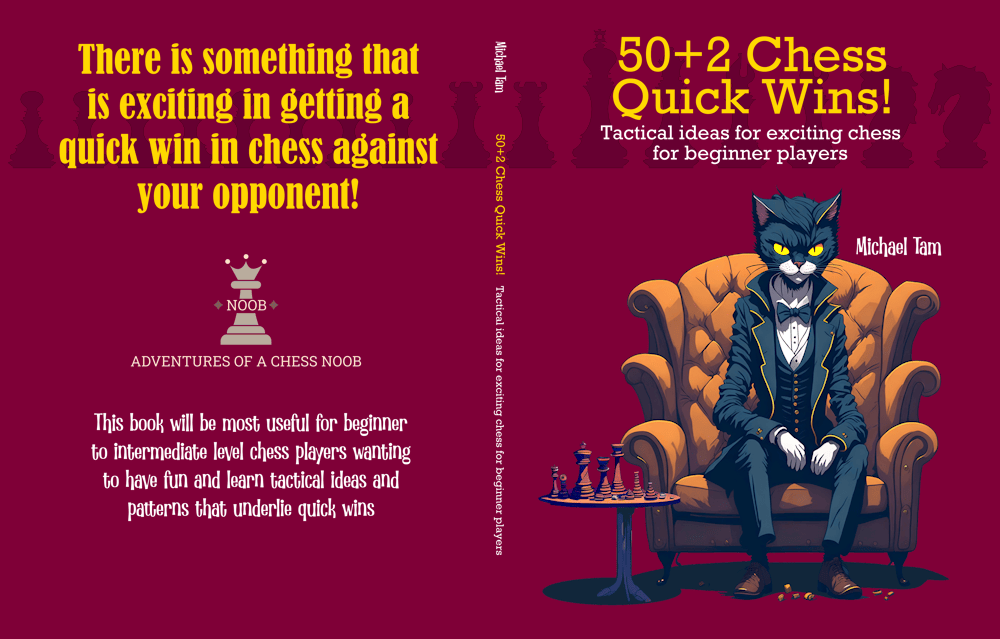
Bishop + Queen f-pawn attack | Tactical Ideas | 50+2 Chess Quick Wins! Book
#tactics #quickwins
50+2 Chess Quick Wins: Tactical ideas for exciting chess for beginner players. Buy on Amazon! US | CA | UK | DE | FR | IT | ES | NL | AU
There is something that is exciting in getting a quick win in chess against your opponent. For the beginner player encountering a quick win (or a quick loss) for the first time, the introduction to these lines can feel like discovering a secret society!
My book, "50+2 Chess Quick Wins: Tactical ideas for exciting chess for beginner players" was published and released on Amazon earlier this year. This is the third video and article of a series that will cover the first section of the book, that explains tactical ideas and themes that underlie many quick win games!
In the Introduction we learnt two tactical ideas from the Fool's Mate and then the Scholar's Mate - the weak f-pawn, and the checkmate pattern with the queen capturing the f-pawn. In my book, I've listed this tactical as the "Bishop + Queen f-pawn attack". Indeed, we can think of the Fool's Mate and the Scholar's Mate as a very specific implementation of this tactical pattern, which is often available over a wide range of openings and positions.
The tactic is based on several facts of the opening stages of chess.
(1) The f-pawn is uniquely vulnerable in that it has no defenders other than the king
Colour coding:
- Red: only defended by the king (f-pawn)
- Green: pawn defended by a non-king piece
- Blue: defended by multiple pieces (e- and d-pawns)
(2) The checkmate pattern
As the f-pawn is only defended by the king at the beginning of the game, this implies that if the queen captures the f-pawn (which comes with check) it must be captured back by the king itself. However, where there are two attackers on the f2 or f7 square, the king cannot recapture since the king cannot be in check at the end of the player’s turn. If the king has no escape squares, which is typically the case at the opening stages of the game prior to a lot of development, then this will be checkmate.
(3) Role of the king's bishop
Why the bishop? The bishop is a long-range piece, and the king's bishop can be developed to attack the f-pawn as early as move 2, as we see in the Scholar's Mate. Furthermore, from a psychological perspective, this is often considered the "normal" development square for the king's bishop which means that the opponent is more likely to be complacent about its position, insofar as not being sensitised to the threat it could represent.
This video for beginner players will cover the tactical idea diagrammatically and revisit the Scholar's Mate from the perspective of this tactical pattern. Then we'll look at two quick wins games (#6 and #50) from the book highlighting the tactical pattern in those games.
Game 1 - Scholar's Mate revisited
Game 2 - Quick Win against the Napoleon Attack
Game 3 - Quick Win in the Italian Game, Anti-Fried Liver Defense



